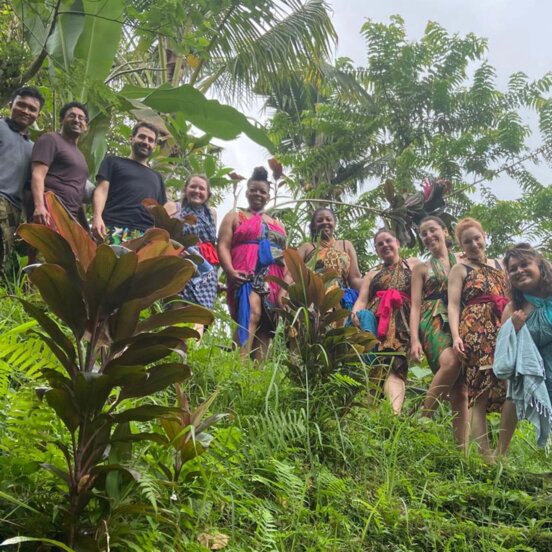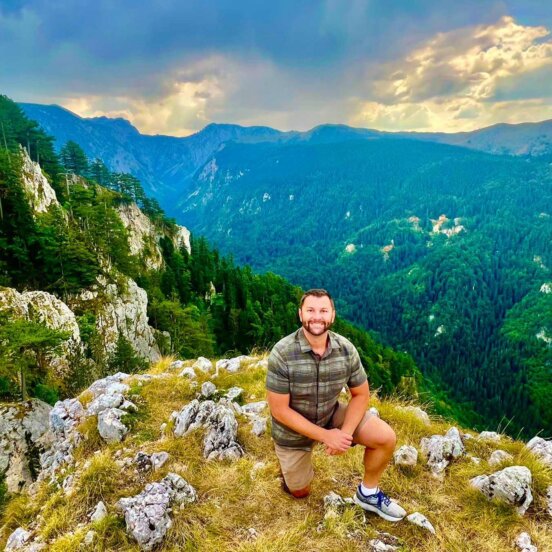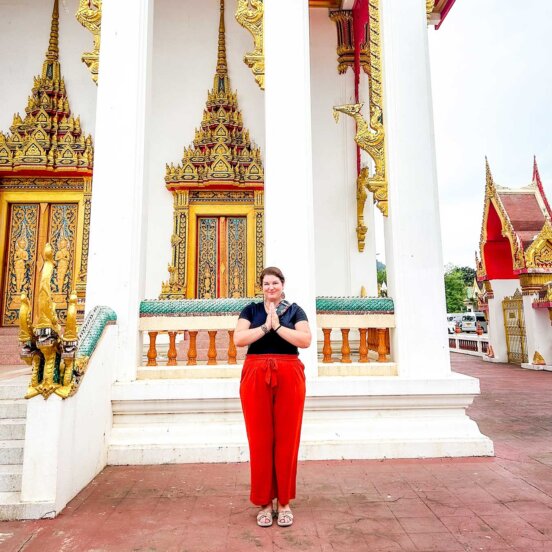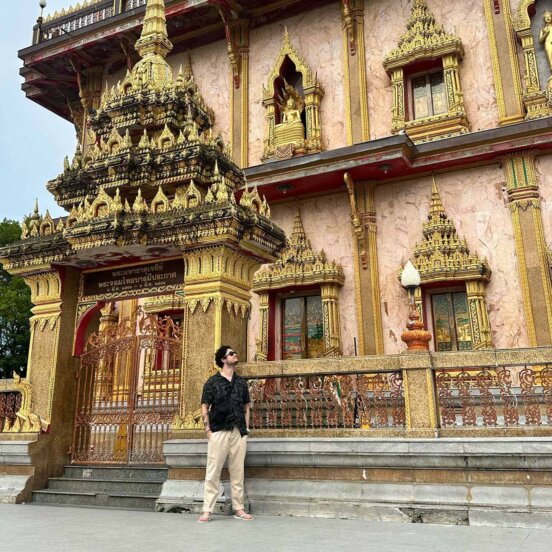How to see Tanzania’s Great Wildebeest Migration in style from a luxury mobile camp
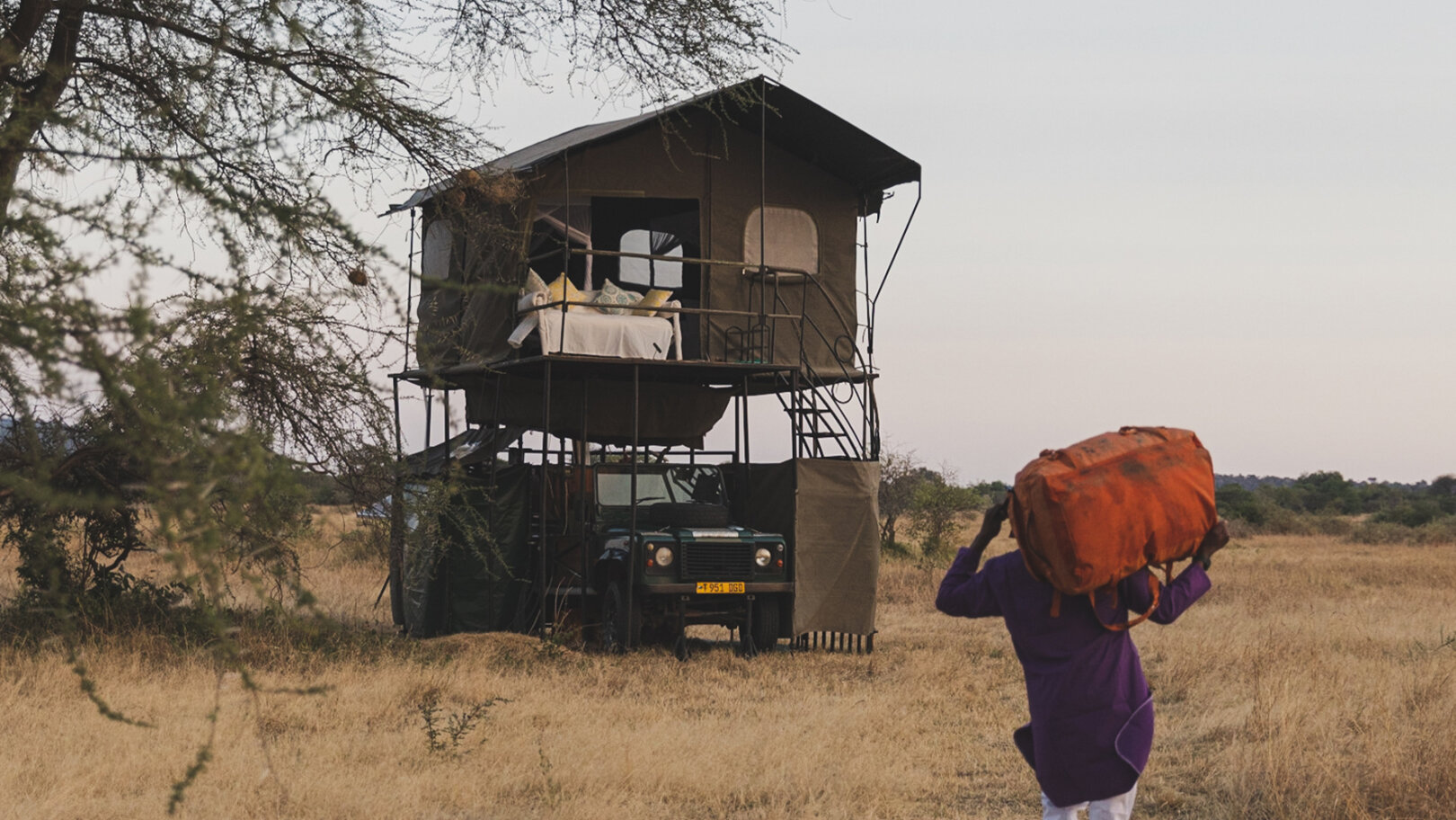
When people hear about the mobile Land Rover camp we run for Flash Pack in the Serengeti National Park, they imagine something that’s quirky and amazing but somehow awkward to stay in.
In reality, our Bush Rover Suites, a series of luxury converted Land Rover Defenders, are ridiculously comfortable. Accommodation is spread across two levels, with a large tented room with bed, sofa and balcony at the top of the vehicle, as well as a little dressing room.
A spiral staircase leads down to the ground floor, where you’ll find a toilet, a shower and even a wood-panelled bath inside the Land Rover. It’s all rather indulgent, especially when experienced alongside lavish daily brunches, afternoon teas and four-course evening meals.
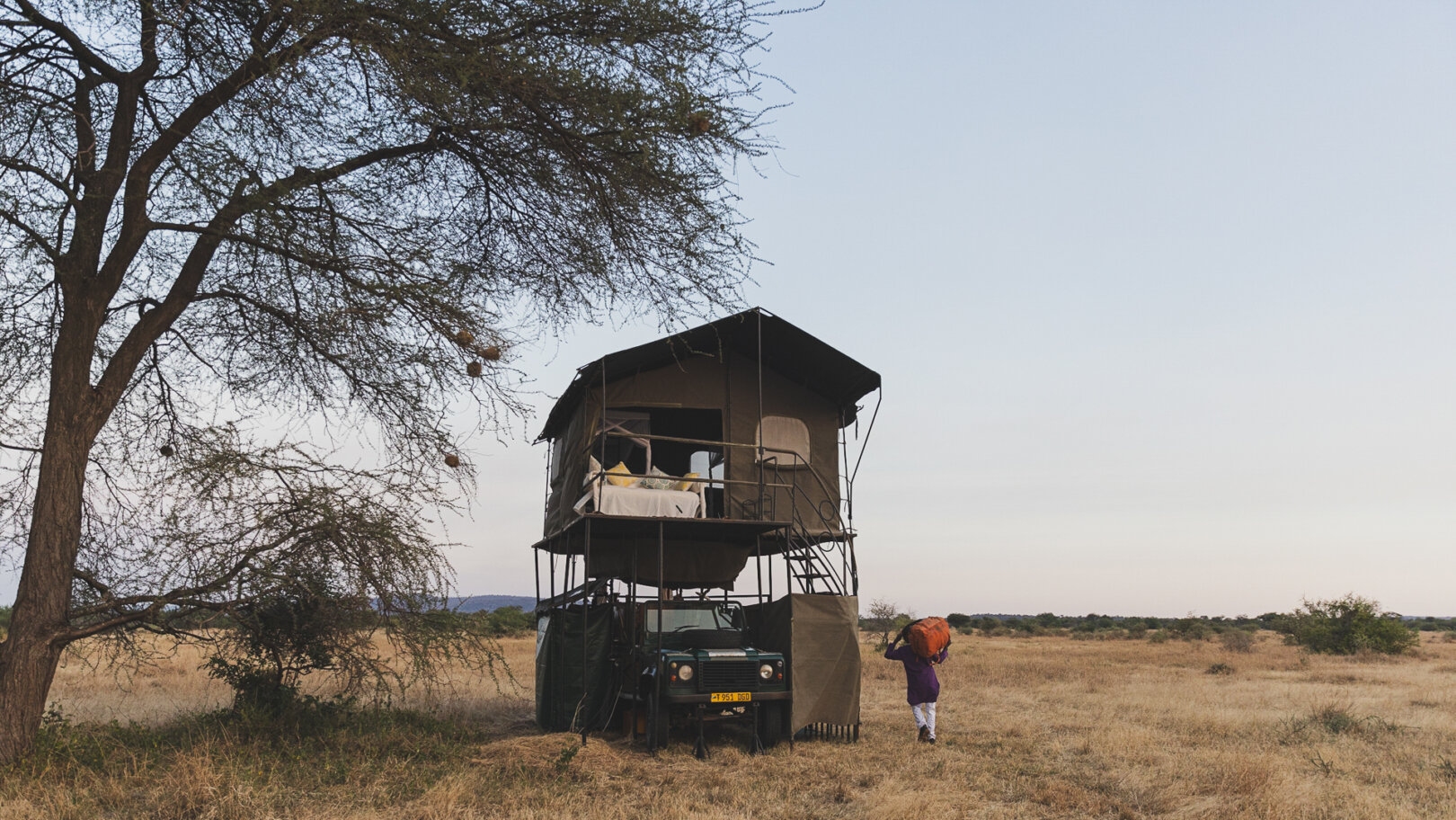
Our Bush Rover Suites are mobile and move to different locations
Yet it’s the elevation which makes our set up in Tanzania so unique, with tents around 18 feet off the ground, offering phenomenal views of the bush and a safe spot from which to observe the surrounding wildlife. Often, you’ll come out onto your balcony at night to see lions, elephants or hippos grazing just below.
The other standout element of our Bush Rover Suites is that they’re mobile – we simply pack up the tents above the roof and drive to different locations.
When you have a world-famous spectacle like the Great Wildebeest Migration on your doorstep things can get crowded and tricky to navigate. This annual, reoccurring spectacle sees 1.5 million wildebeest migrate between the Maasai Mara and the Seregenti in search of fresh grazing ground – with a wave of opportunistic predators following in their wake.
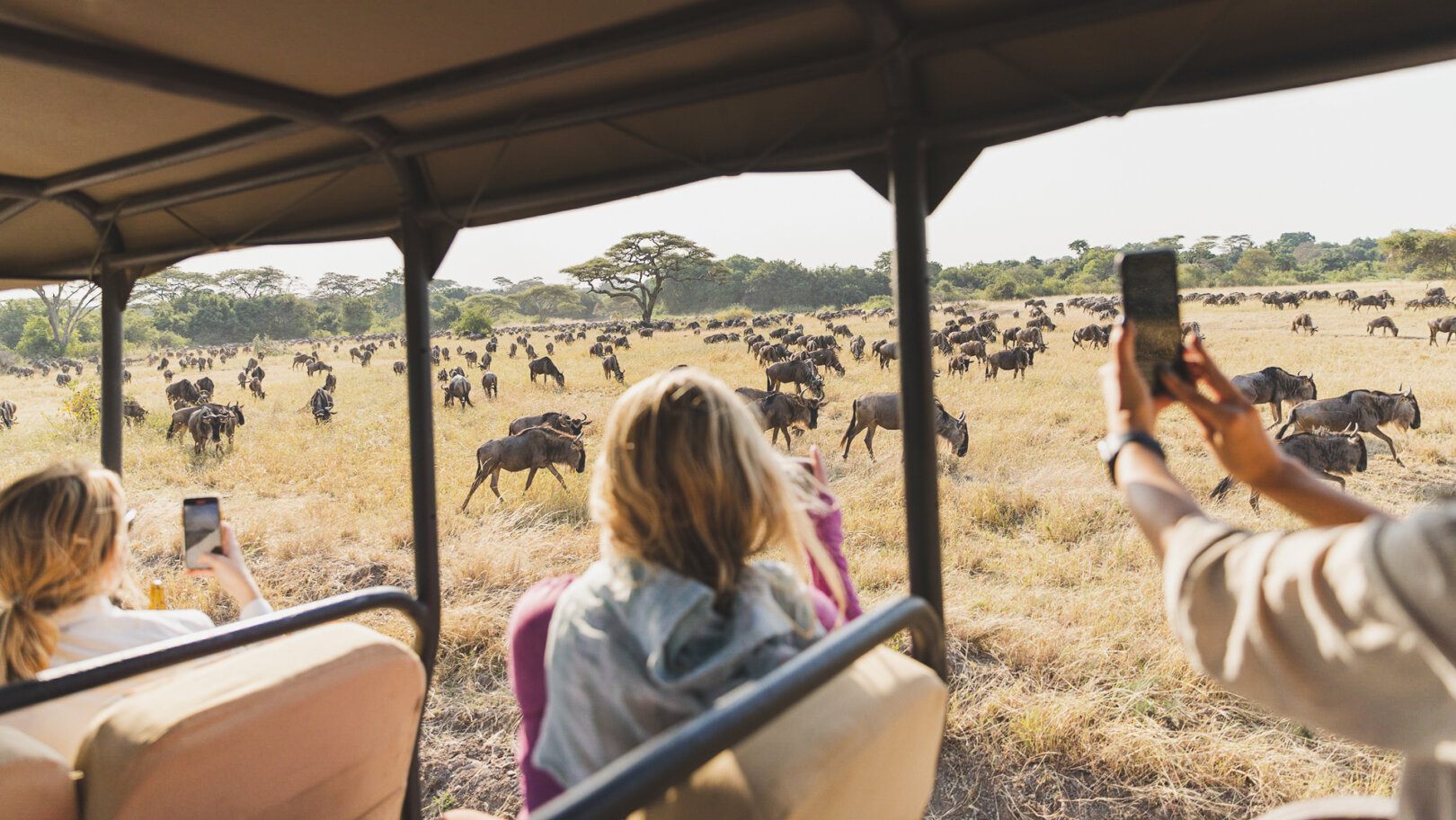
Being on wheels, we get front-row access to all the wildlife drama
People always ask ‘When’s the best time to go?’, ‘Where can we see the best wildlife?’. But the beauty of our camps is that they’re designed to move in rhythm with these beautiful creatures as they roam through the Serengeti and the Mara in a vast loop.
Being on wheels and not grounded to one spot like other camps means we get front-row access to all the wildlife drama across three immersive and off-the-radar locations. The Bush Rovers stay stationary in each new spot but we then head out on safari jeeps for game drives at dawn and dusk.
Each location has its own special virtues. For example, we’re based in Kusini in the southern Serengeti (kusini means “south” in Swahili) during the February calving season. As our most remote setting, Kusini offers a really magical experience, and far away from other people.
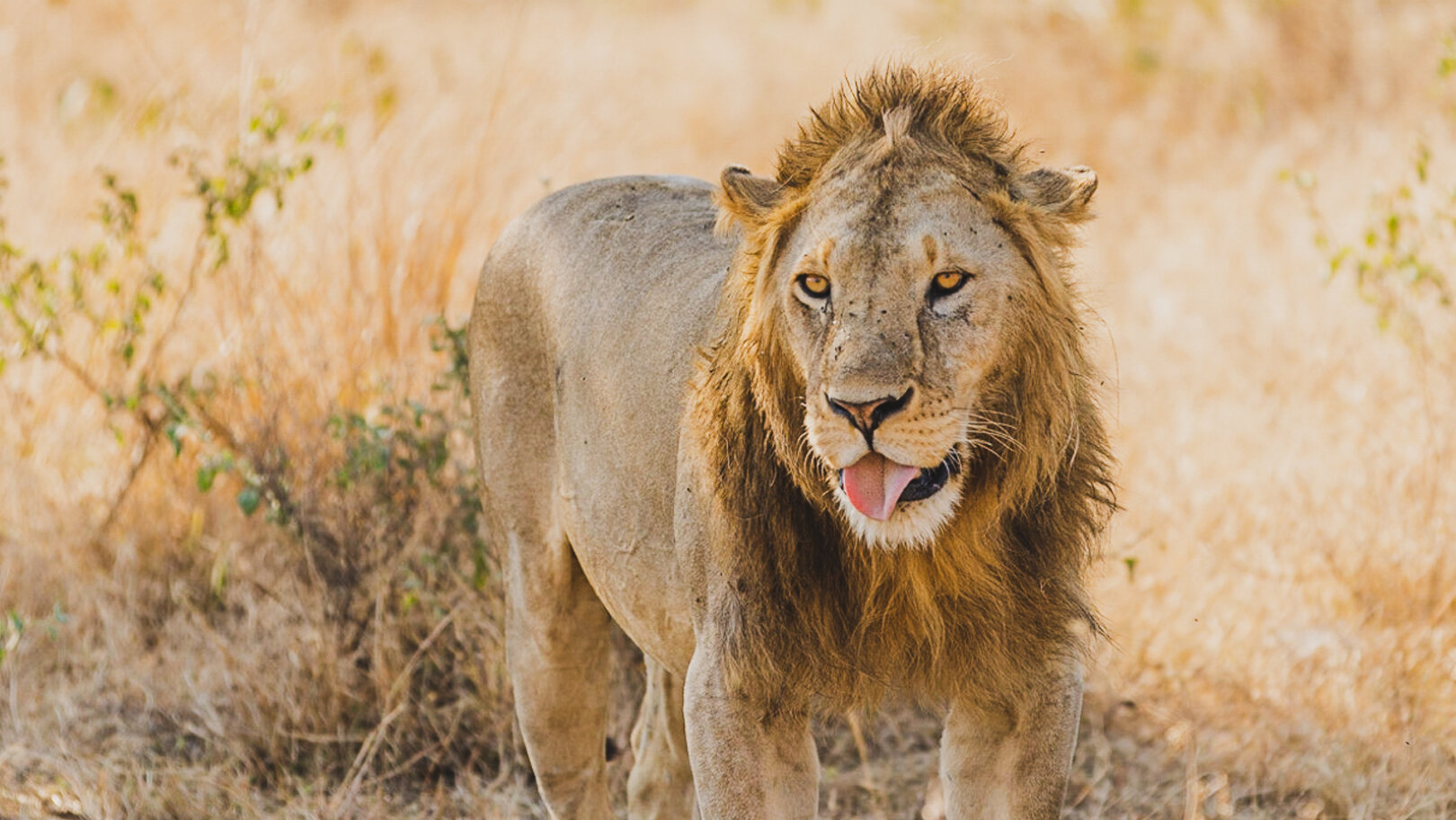
In game-rich places, you’ll see cohorts of nomadic male lions
It’s based around the rim of an impressive open crater that appears out of nowhere, surrounded by miles of forest and giant kopjes (hills). There are no roads leading to it so we make our own when we set up camp. It’s at least a day’s drive to anywhere and we rarely see other vehicles in the area, so you have the wildlife all to yourself.
It creates this incredible level of exclusivity. There’s nowhere better on the planet for seeing cheetahs, for example. They emerge from the cover of the trees onto the open plain in pursuit of Thomson’s gazelles and wildebeest calves, which make for easy prey.
You can tell that Kusini is a good place for lions, too, because you’ll come across cohorts of five or six nomadic males. This only happens in very game-rich places. When we’re at Kusini, we’ll drive across high open plains, through thousands of wildebeest, always on the lookout for predators.
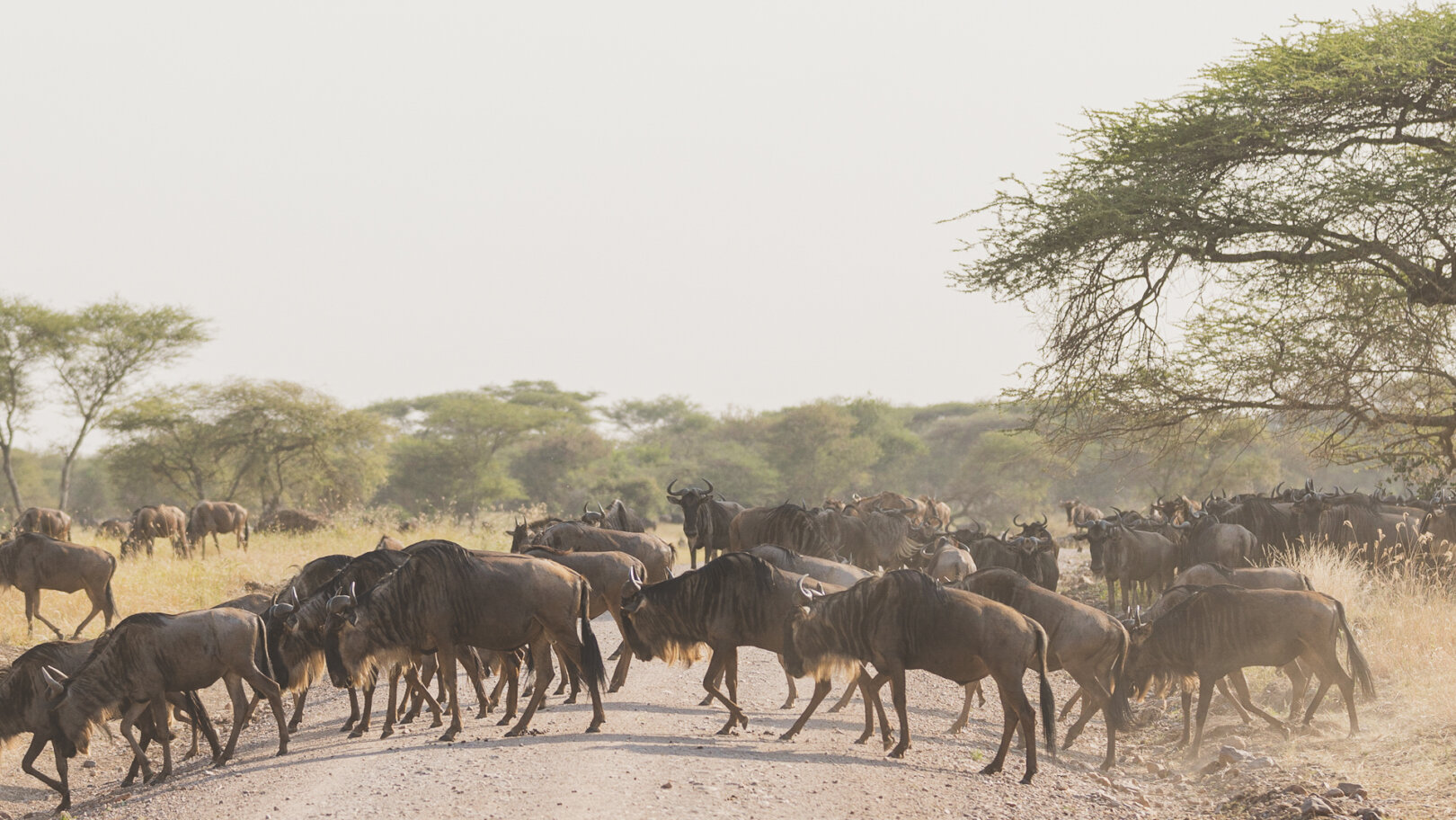
You’ll have thousands of wildebeest migrating through the area
Next, we have a short break during the so-called “long rains” season, from mid-March to the end of May, when parts of the Serengeti become inaccessible. Then from June, we set up camp by the Grumeti River in the Western Corridor.
It’s a super spot. The Grumeti is fringed by a riverine forest belt. Our Bush Rover Suites are set back a little from the water and overlooking trees. It’s generally dry season but everything is still green from the rains. There’s good visibility, too, thanks to the grazing buffalo and wildebeest, who come in their droves and keep the grass down.
Throughout June and July, you’ll have thousands of wildebeest migrating through the area flanked by zebra, gazelle, eland, topi and impala. The vegetation and water means the Grumeti location is very wildlife-rich, so you’ll also hear hippos in the river and you may come across elephants and big cats, too.
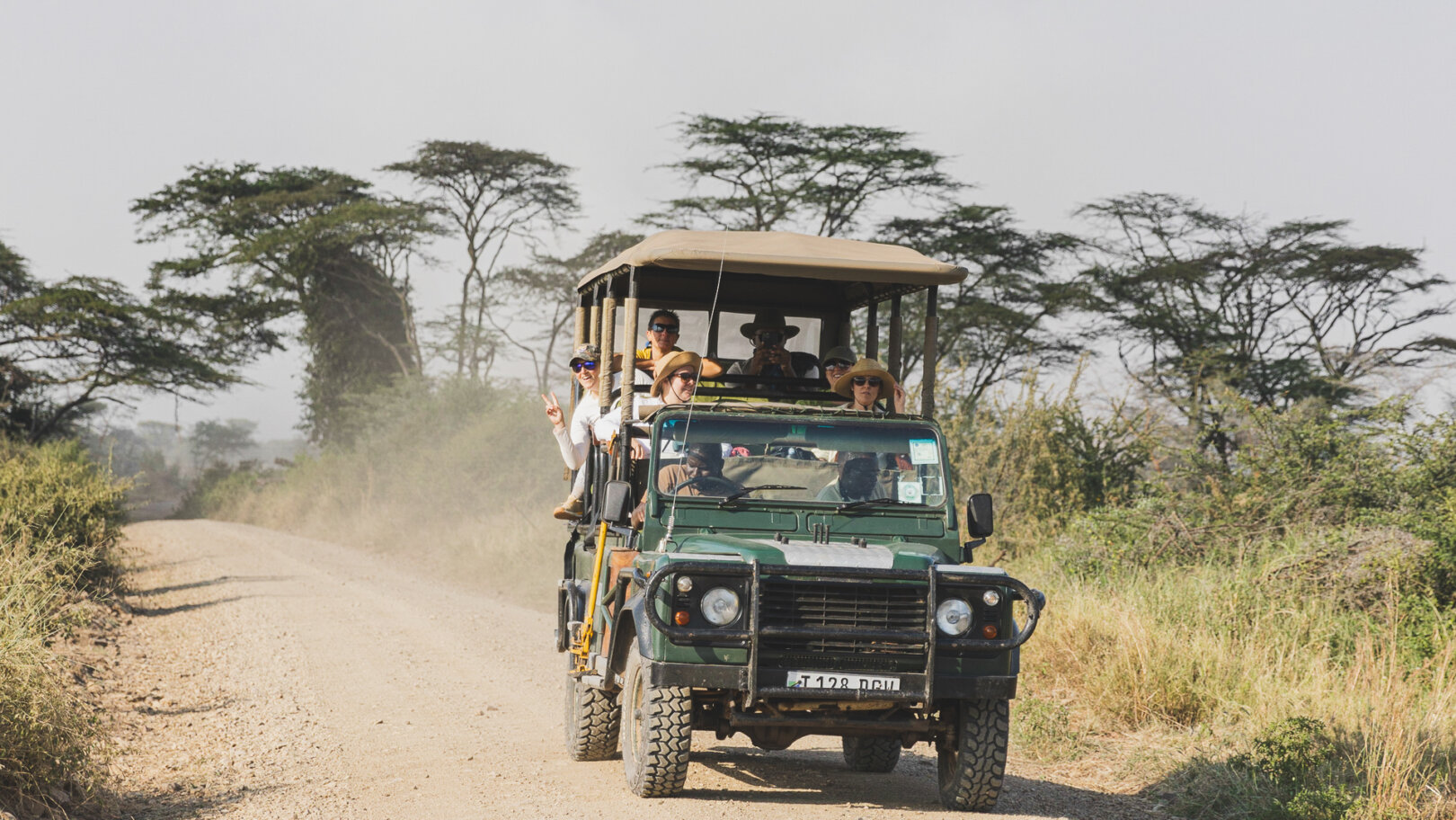
In the Serengeti’s high season, we move to the Mara River
Last season, we had a pride with a pair of males, three females and some very young cubs nearby. They wandered through our camps most nights; the sound of them roaring was spectacular. At the far end of the Western Corridor it’s possible to see static groups of wildebeest, which have completely different patterns to their migratory cousins. At Grumeti, you may even spot a river crossing or two.
From the middle of July to the end of October, which coincides with the Serengeti’s high season, we move to the Mara River, known as the place for river crossings. There are just a dozen crossing points in the entire national park and we’re one of the only camps that directly overlooks one.
It’s an advantage for us because, while other groups in this popular area are waiting three or four hours for a river crossing, we’ll be off spotting lions, leopards and elephants in the relatively empty bush. Then, when they all go home for the night or are yet to arrive early in the morning, we’ll drive down to see stampeding wildebeest fighting for their lives with crocs and other predators all around – a crowd-free cinematic sight that’s only ours to enjoy.
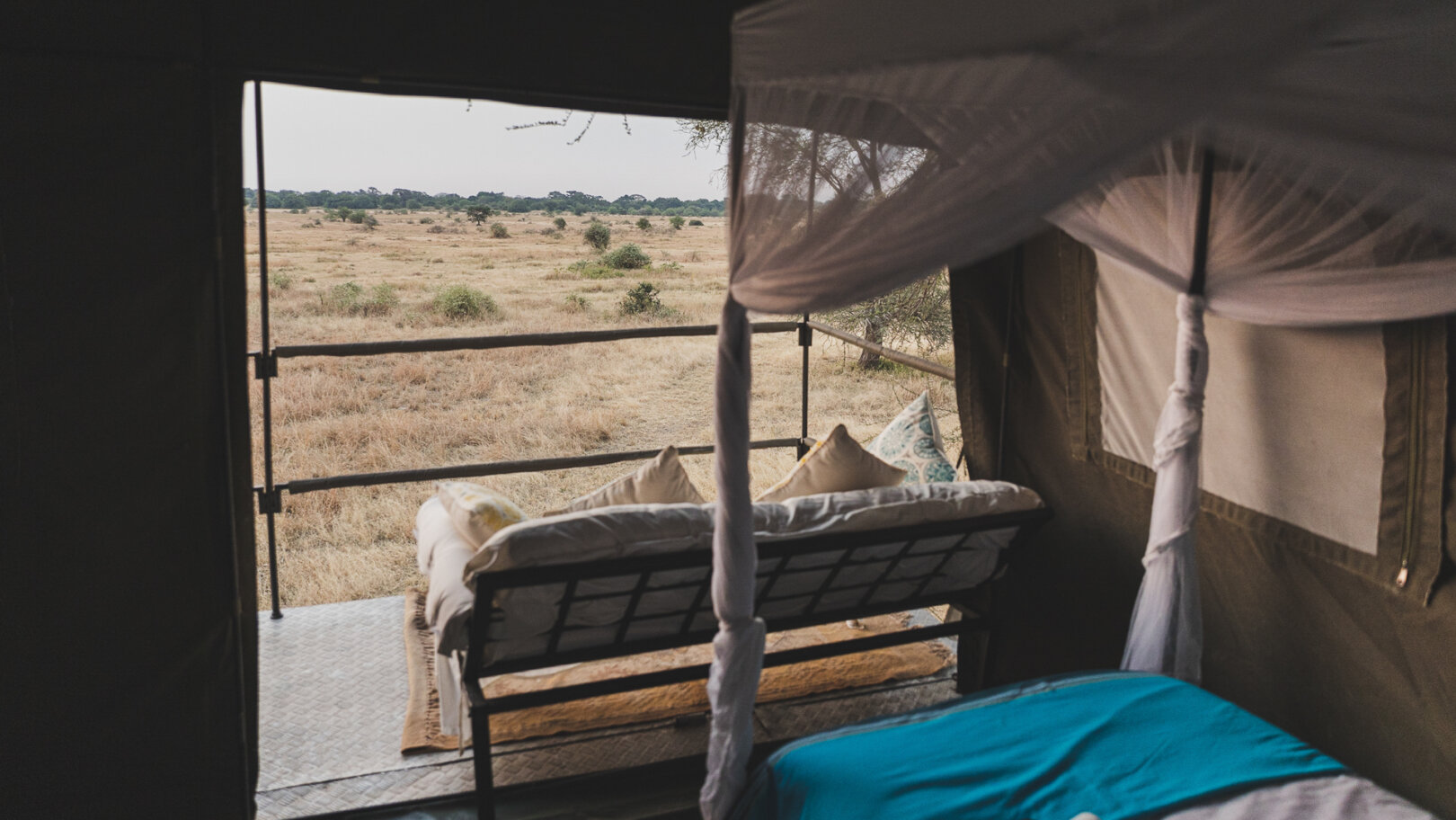
The nighttime soundscape is always exhilarating
We’re set on a hill, looking down on the Mara River, so you’ll also see the crossings from your Bush Rover balcony. Crossings don’t just happen once, either. Wildebeest tend to go back and forth on this incredibly dangerous journey, depending on where the best grass and rains are.
Wherever our Bush Rovers are based, the nighttime soundscape is always exhilarating. You’re surrounded by this constant barrage of bush noise, from grunting wildebeest to yelping hyenas. You’re always safe on your balcony but we always have Maasai locals in senior roles in our camps, too. They’ve spent their entire lives around animals, so they’re very attuned to wildlife behaviours and help our guests feel safe and secure.
My favourite moment is when we all gather around the main campfire in the evenings. We’ll have cocktails and canapés, but it’s also a very moving, primordial experience. There are stars all around, you forget about the banality of life and you connect with one another through the wilderness. It’s what a life-changing safari experience is all about.
See the Great Wildebeest Migration in style from the comfort of converted Bush Rover suites on Flash Pack’s exclusive Wild Tanzania adventure.
Got a story or adventure that could inspire a solo traveller like you? Tag @flashpack on social or email [email protected] to be featured.
Images: Flash Pack





